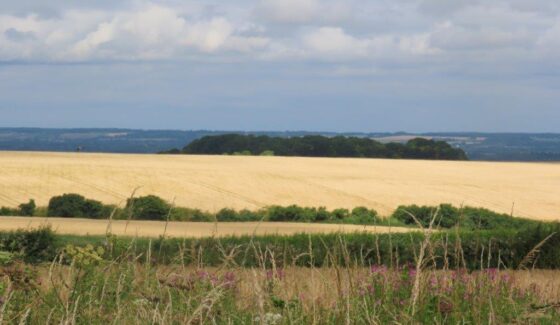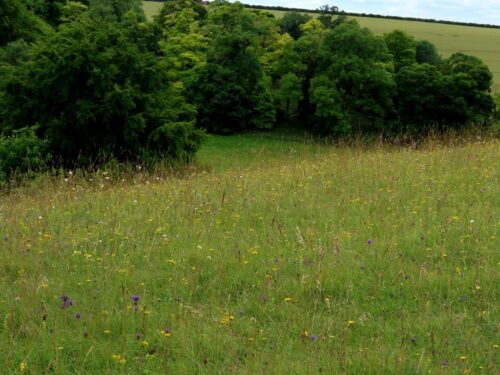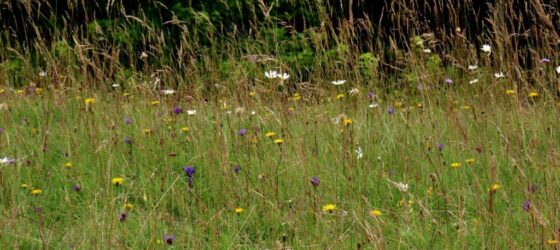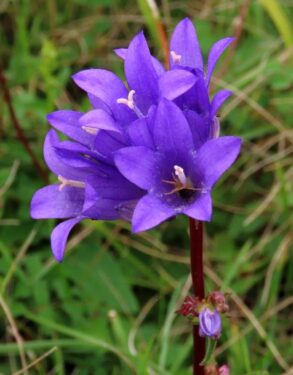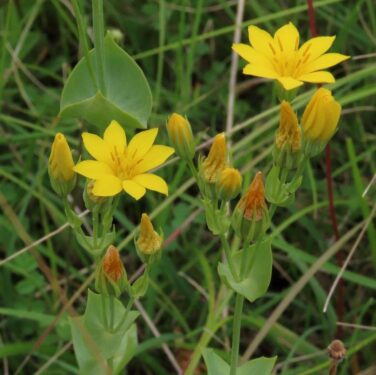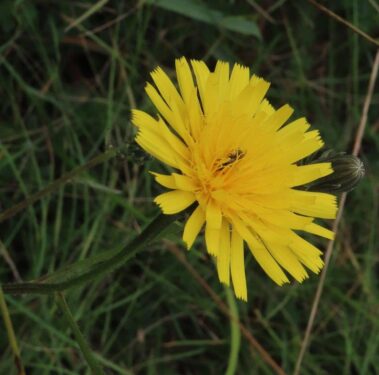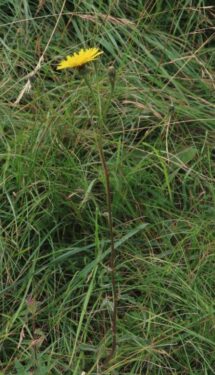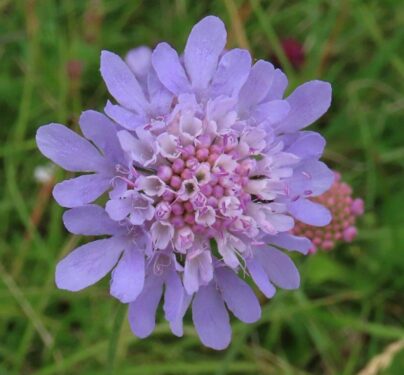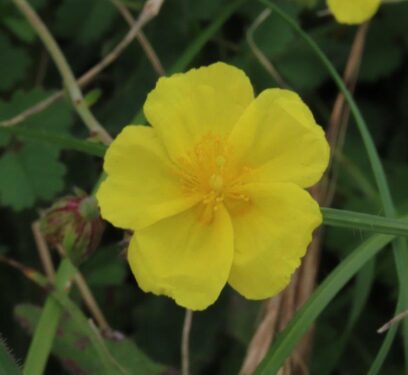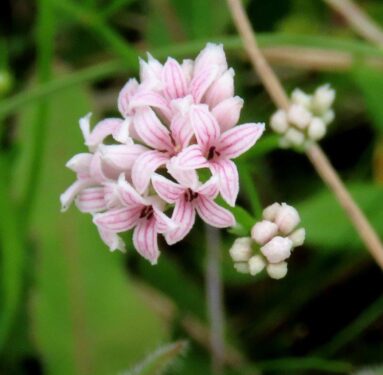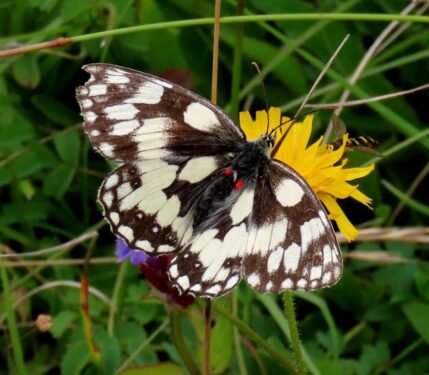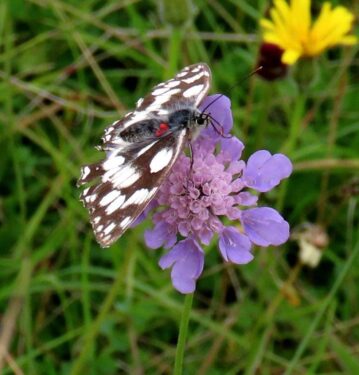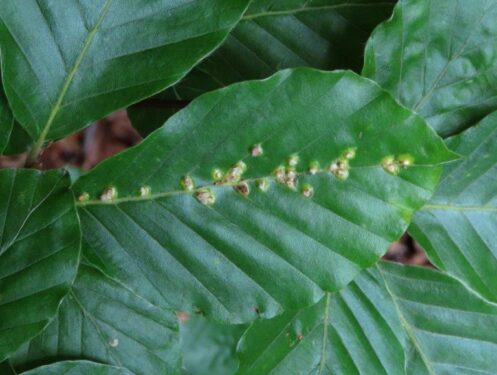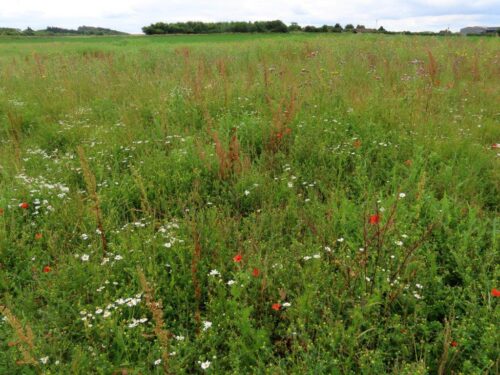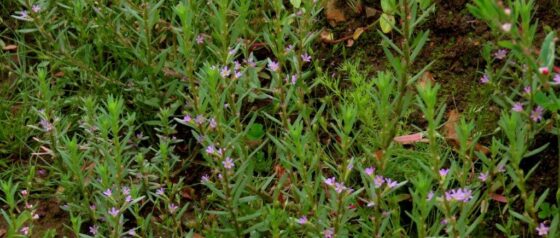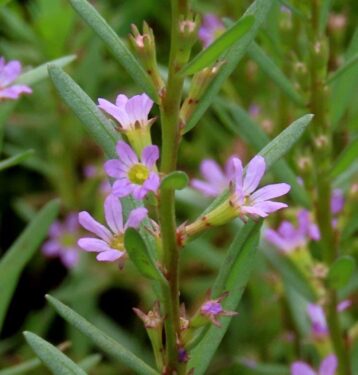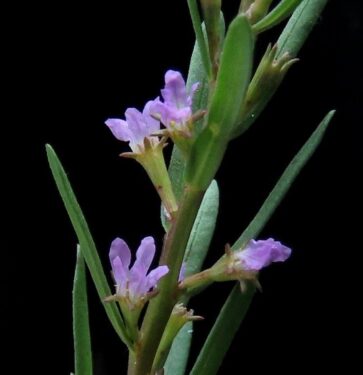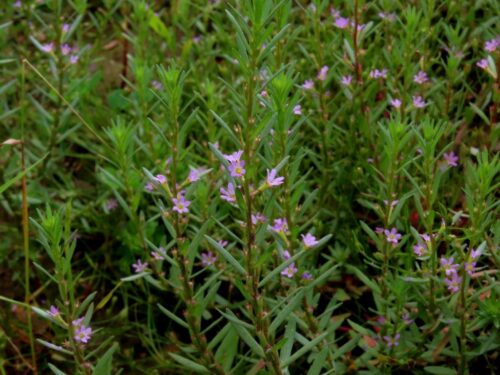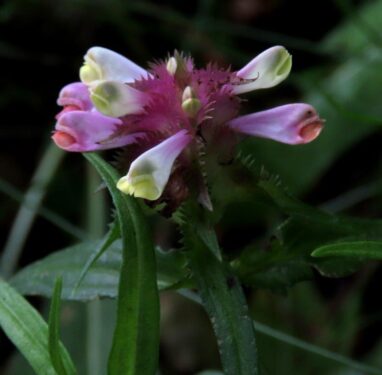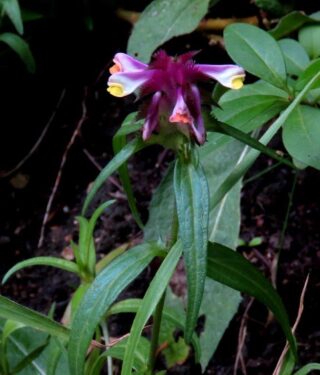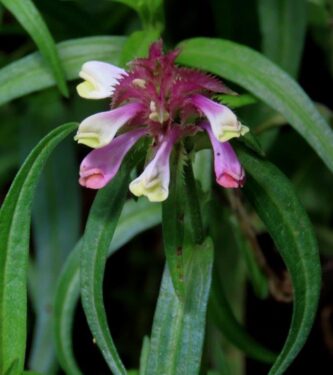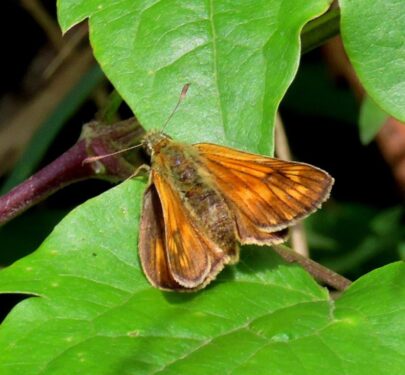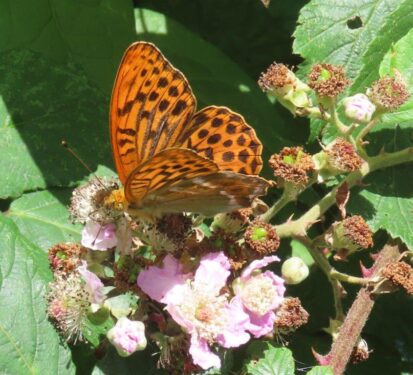Essex is a large county, and over here on the eastern seaboard, the chalklands of the west are really a step too far away … unless one has to pass through on the way elsewhere. Earlier this year was one of those, but as a late spring it wasn’t hugely productive (except for Pasque Flowers), so I decided to drop in for more summery fare on my way to and from Birdfair, near Rutland Water.
At the juxtaposition of Essex, Cambridgeshire and Hertfordshire, the mid-Anglian Chilterns Chalk is best seen perhaps at Therfield Heath (Herts) and here the chalk grassland flora was just outstanding.
Taller species like Clustered Bellflower, Yellow-wort, Dropwort, Hairy Hawkbit and Hawkweed Ox-tongue…
… mingled with shorter ones like Small Scabious, Common Rock-rose and the simply delightful candy-striped Squinancywort.
Marbled Whites flew away at every footfall, and of those that did settle a good proportion had passengers in the form of hitch-hiking mites. A species called Trombidium breei, this normally attaches to the thorax or legs of the host and seems to be particularly prevalent on Marbled Whites.
A final point of interest was from the Beech trees that abut the grassland. Just a few leaves showed a line of galls running down the midrib. These belong to a gall midge Hartigiola annulipes. Although widely distibuted across the country, it doesn’t seem to have been recorded before from or near to this locality, at least according to the National Biodversity Network Atlas.
Elsewhere, the low rolling landscape, mostly clad in intensive arable and a few hedges, the realm of singing Yellowhammers and Corn Buntings, the only real clue to the underlying geology is the remnant chalk flora in some of the grass verges, with Field Scabious and Greater Knapweed being especially good indicators. The narrow, often single-track roads don’t lend themselves to easy stopping, but with my long history of working in the counties, I have come to know a few good spots with reasonable access. And so yes, I took the opportunity to drop in on a few old friends.
Near Thriplow (Cambs) in a field margin prone to winter-wet is an accessibly colony of a very rare, small but attractive plant, Grass-poly.
As an annual of often ephemeral waters, its population waxes and wanes; seeds are probably moved around on the feet of ducks, as well as remaining dormant in soil for long periods during adverse conditions.
I have seen it here maybe four times in the past two decades and my feeling is that this year will not be particularly successful for it. The surrounding vegetation is so lush from earlier rains that the flowering patches are reduced to little more than a few square centimetres in extent, a far cry from the sheets I have seen before. But it will no doubt be able to bounce back, through natural immigration on ducks and from the germination of buried seed.
Moving into Essex, the final location near Saffron Walden is somewhere I have known for even longer, perhaps 40 years. It is a road verge, and one that is protected as it holds good population of Crested Cow-wheat.
This magnificent plant has a very good claim to be the botanical icon of Essex. Pretty much restricted to the chalk and chalky boulder clays of north-west Essex, south-west Suffolk and eastern Cambridgeshire, it has a very similar national distribution to our other iconic plant, Oxlip.
Although like Grass-poly it is in annual, this population of Crested Cow-wheat seems to fluctuate less markedly. With little or no seed bank and no obvious vectors of long-distance immigration, it should therefore be regarded as vulnerable to environmental change. Gratifying therefore to see this year that plants are distributed pretty much as I have seen them before over the years.
Interestingly, there was also a flurry of butterfly activity, welcome after such a deep June chasm. Ringlets were everywhere with lots of Large Skippers and a Brimstone (my first of the summer brood), along with something that would not have been part of the scene 40 years ago, or even 20 years ago, Silver-washed Fritillaries patrolling the wood edge in abundance and seeking newly opened Bramble flowers. Times change, and sometimes for the better!
Old friends is old places, there is something both reassuring and instructive about returning again and again to see them!
